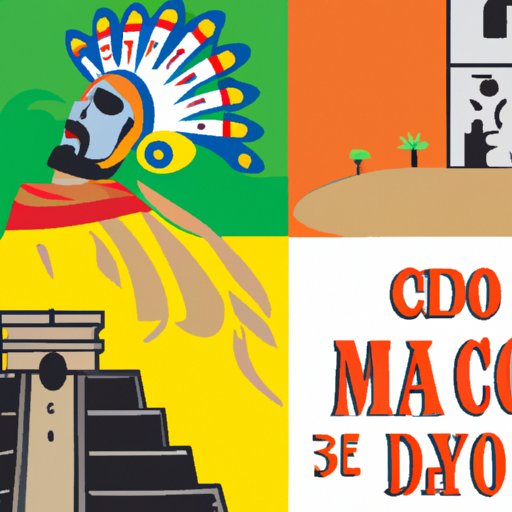Introduction
5 de Mayo is a popular topic of discussion among people of Mexican descent both in Mexico and abroad. Often confused with Mexican Independence Day, which falls on September 16, 5 de Mayo celebrates a specific event in Mexican history. This article explores the historical roots, cultural significance, and modern-day celebrations of 5 de Mayo.
Historical roots and significance of 5 de Mayo
The Battle of Puebla took place on May 5, 1862. It was a significant victory for the Mexican army, led by General Ignacio Zaragoza Seguín, against French forces. The French had sought to invade Mexico to establish a French empire in the Americas, but their defeat at Puebla was a significant setback, and they ultimately retreated. While the victory did not end the war, it gave Mexicans hope and inspired them to continue to fight against foreign intervention.
The Battle of Puebla remained important in the context of Mexico’s relationship with France. The French eventually invaded and occupied Mexico, but the Battle of Puebla served as a symbol of resistance and national pride. The historical event was celebrated annually in Mexico, and it gradually became a symbolic date for people of Mexican descent living in other parts of the world.
For many Mexicans and Mexican Americans, the Battle of Puebla represents a moment in which they were able to stand up against foreign intervention. It has become a symbol of Mexican resistance and pride.
5 de Mayo celebrations across the United States
5 de Mayo is widely celebrated in the United States, particularly in states with large Mexican American populations, such as California, Texas, and Arizona, but also in other parts of the country.
The holiday is celebrated in various ways, from community events and parades to concerts and festivals. Many cities and towns host their own celebrations, with musical performers, traditional dances, and cultural displays. Some events also include educational activities to teach people about the history and cultural significance of 5 de Mayo.
Traditional food and drinks consumed during 5 de Mayo
Food is an essential part of 5 de Mayo celebrations. Traditional dishes include tacos, enchiladas, tamales, and mole, while popular beverages include horchata, micheladas, and margaritas.
Many of these dishes have a historical context and are linked to the Battle of Puebla. For example, mole poblano, a rich sauce made with chili peppers, chocolate, and spices, is said to have been served to celebrate the Mexican victory.
Comparing and contrasting 5 de Mayo with other Mexican holidays
5 de Mayo is often compared to Mexican Independence Day, which is celebrated on September 16, but it is also different. Mexican Independence Day commemorates the start of the war for independence against Spain, while 5 de Mayo marks a victory against an invading force.
Another significant holiday in Mexico is Dia de los Muertos, which is celebrated on November 1 and 2. This holiday is a time to remember and honor loved ones who have passed away. Unlike 5 de Mayo, which commemorates a historical event, Dia de los Muertos is a cultural and religious holiday with indigenous roots.
Debunking common myths and misconceptions about 5 de Mayo
There are many myths and misconceptions about 5 de Mayo. One common misunderstanding is that it is Mexican Independence Day, but as previously mentioned, this is not the case.
Another myth suggests that 5 de Mayo is not celebrated in Mexico, but this is also false. While it is not a national holiday, the Battle of Puebla is still recognized and celebrated in Mexico, particularly in the state of Puebla where the historic battle took place.
How 5 de Mayo has evolved over time and its current impact on Mexican-American identity
5 de Mayo has evolved over the years, particularly in the United States, where it has become increasingly commercialized. Many businesses use the holiday as an opportunity to promote their products or services, often with little regard for the historical significance of the date.
Despite its commercialization, 5 de Mayo remains an important date for many Mexicans and Mexican Americans, who see it as a way to celebrate their heritage and cultural identity in the United States. While it is sometimes criticized for promoting stereotypes and perpetuating cultural misunderstandings, others embrace it as a way to celebrate their heritage and share their culture with others.
Conclusion
5 de Mayo is a significant date in Mexican history, and its celebrations have spread beyond Mexico to become an important part of Mexican-American culture. While there are many misconceptions and commercialization surrounding the holiday, it remains an essential date for many people who see it as a way to celebrate their heritage and cultural identity.
